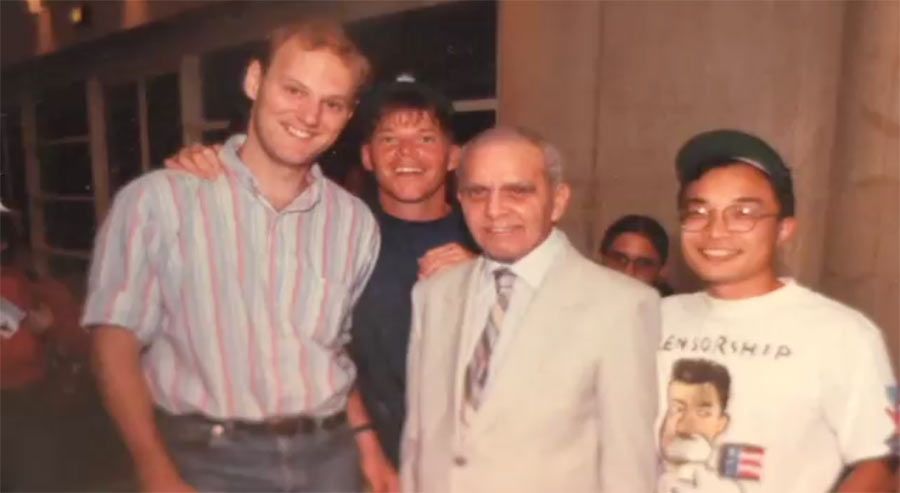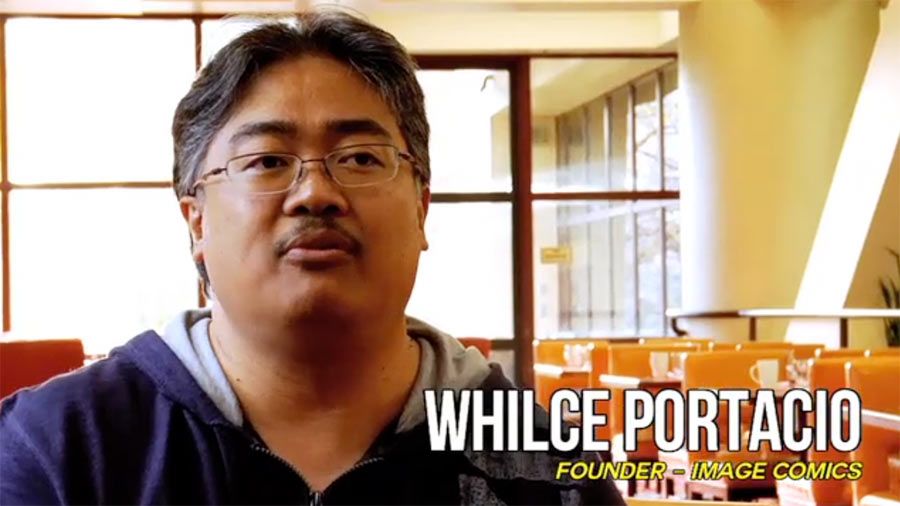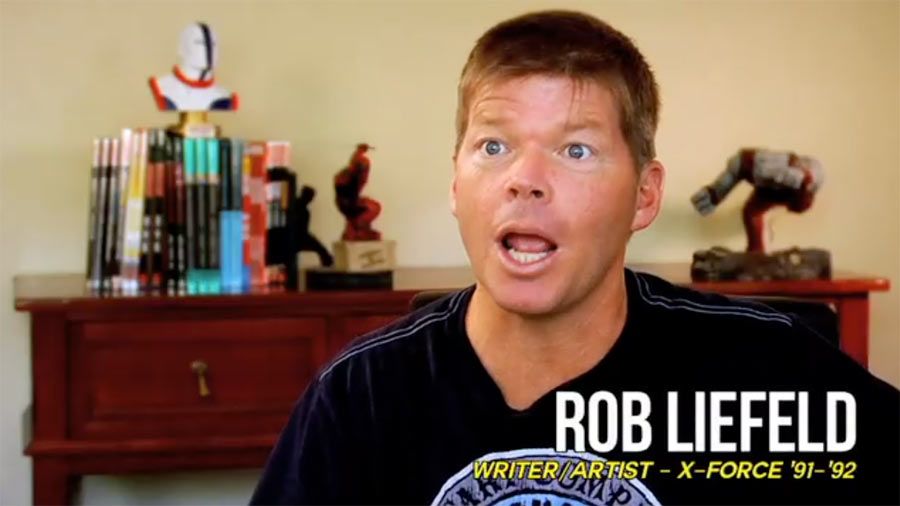THE IMAGE COMICS REVOLUTION
I don't think there's a single topic in all of comics that will get me more revved up to talk than the history of Image Comics. It must be because I lived through it from afar as it happened, from the public point of view. I remember seeing the headline on the front page of "The Comics Buyers Guide" at the magazine rack at the local Waldenbooks. I remember following all the news through CBR and Wizard and USENET and the World Wide Web and whatever format it would come in. I've met and talked to many of the creators from that era of comics. I've read a ton of those interviews. I've got a few longboxes downstairs to back me up, and a couple hundred letters printed in the backs of those comics, to boot.
I can't talk to the early days of Marvel or DC. I can't talk about the black and white boom of the 1980s. I can't even give you a proper history of the creators' right movement in the 1970s and 1980s. I wasn't there.
But Image Comics? That's MY comics history. Get me the popcorn and let's talk turkey.
So when Sequart announced a Kickstarter to fund an Image Comics documentary, "The Image Revolution," you bet I jumped on it. It arrived this weekend. Popcorn still in hand, I just finished watching it. The movie does not unearth anything new. It doesn't add a fresh perspective or blockbuster interviews with people ready to burn bridges and get their version of the truth out there. It's a timeline-driven history (mostly) of the earlier days of Image straight from the boom to the bust, then skipping ahead to "The Walking Dead" before calling it a day.
It might not be a powerhouse of journalistic endeavors, but it'll be informative for someone who's new to the topic and isn't sick of hearing about Kirkman's faked alien invasion story. It is, however, an entertaining special, a glossy overview of a fun period of comics with lots of memorable and honest remembrances from the participants. All seven founders (plus Whilce Portacio and Robert Kirkman) are interviewed for the piece.
It's a brisk walk through the last twenty-five years of history with this group of creators. They're all interesting stories on their own, which is why combining them to tell one large story inevitably means skipping over some interesting parts to pick the most dramatic bits. The movie doesn't go far enough in making the case that what the Image Founders did was dangerous, nor does it quite go far enough in explaining why it was necessary. I don't think it even points out enough of the ways it changed the industry. It hits briefly on some of it, but there's no time to dig in far enough to do more than highlight it.
The movie is a series of interviews, mostly with the initial founders of the company. They got them all on camera, including Jim Lee. Like a VH-1 documentary, the story is told from multiple points of view, with a ton of footage of talking heads interspersed with period footage that take you through the history. It's a format that works well, intercutting between the actors in a story to flesh things out or to give funny angles on serious events. I think there's enough distance now to the earliest days that the creators can talk a little more candidly about it, being more aware of what their weaknesses were, given their own growth of maturity over the years.
That said, the little artistic interludes to let viewers read comics history in a movie that's otherwise all talking heads is a little odd. Pick the most entertaining person you can find to walk you through those bits -- notably the treatment of Siegel and Shuster by DC, or Jack Kirby by Marvel -- and let them handle it. I don't want to read this movie. I especially don't want to see bad lettering in that segment, either, complete with the dreaded crossbar-I character in the middle of words.
Other bits of production work come out fine. Excerpts of dialogue from early Image comics often mirror or make ironic the voice of the talking head of the moment. The graphic showing the top-selling books of 1991 works well. Letting the classic clips give you a sense of the time is always going to be better than just having narration.
The interviews with the creators are shot well when there's a time and a place to properly set up a shot. The indoors interviews looks fantastic. A couple of the shots outdoors in San Diego look a bit less sharp, and the shots done at some kind of "Walking Dead" event were probably the best that could be managed for a night shoot. (One actor's eyes are completely in the dark under a baseball cap for the entire segment.)
The movie includes lots of excerpts from period video, recorded straight from VHS tapes that need work on their tracking. I'm not sure if that was a purposeful stylistic trick or the state the original materials were in, though. The Stabur Video tapes of the Founding Fathers get quite a workout. If you want to see Todd McFarlane in painfully high-waisted jeans or Jim Lee with his large glasses and Malcolm X hat on, you've come to the right place! Just don't mind the poor picture reproduction. It's tough to bring in 220 pixel wide imager into 1080p without some softness.
Other videos I had never seen before, such as Jim Lee's tour of Homage Studios, or Rob Liefeld's similar Extreme Studios video. There's even video of the Youngblood plane/bus/whatever-that-was being constructed and people walking through it. As I recall, that made some appearances at comic shows at the time. I was never near one.
The movie gives Rob Liefeld the best opportunity to display his skills as The World's Greatest Todd McFarlane Impressionist, something which he'll have to add to the back of his business card this week. I also like Valentino's description of Liefeld as being "like a speed freak that stuck his finger in the light socket." It helps to drive home that this group of Image Founders feels a lot like a brotherhood as much as anything else. They have their squabbles and they make fun of each other constantly, but they get along at the end of these days more often than not.
There are lots of the standard historic pictures you've seen of the group forming together, but there are other shots that are new to me, both individually and as a whole. Those were nice.
I don't mean to pick on people, but who is Taliesin Jaffe and why do I care what he thinks about Image Comics? How did he wind up on this documentary so often? He's an anime voice over artist whose biggest live action role was as a child actor on "She's The Sheriff," if my research is right.
If you wait long enough, you can cheer on Joe Keatinge in the last five minutes of the movie for about ten seconds. Heidi MacDonald, Rich Johnston, and Larry Marder play more regular roles. I'd love to see all the footage from Marder's interview. He was knee-deep in some of the most dramatic Image history, including the Todd McFarlane/Neil Gaiman debacle (which is not covered in the movie, since it doesn't fit the narrative.)
Looking back on it with fresh eyes, I have to agree with Todd McFarlane and Erik Larsen that Maximum Press made no sense. Why did Rob Liefeld have a side company to publish his own comics? Isn't that what Image was for? At the time, I thought nothing of it, but I see it today as a bizarre move. There's not a single good reason to publish through Maximum. It's not like Image grabbed ownership rights to those books or charged Liefeld more to publish them. I don't know if I agree with McFarlane when he says it's a conflict of interest that might be legally actionable in some industries. I wouldn't go that far, but creating a new label and a new publishing plan under it is a bit bizarre. Pointless. I don't think we saw the full story there, and I have a hunch there's a weird money angle going on.
But, again, there were lots of weird and dramatic things going on with both Homage and Extreme Studios. It's what happens when a simple publishing concern becomes a larger operation. It forces its founders into uncomfortable positions. Whether it's Jim Lee selling out to DC or Rob Liefeld withdrawing from work and getting himself kicked out of Image, I think you'll find the most dramatic moments of Image's history linked with the growth of the studios in a booming market that couldn't sustain themselves during the bad times. There's a reason "Heroes Reborn" happened, and I'm convinced the money was the biggest part of it. Look who participated in that deal: The two biggest studio owners at Image. It's not cheap to run a studio, particularly if you want to keep lots of people around even after the bottom has dropped out. It's a mad scramble to keep people employed and the cash flowing.
After that, the last decade of Image Comics is summed up in a five minute segment on "The Walking Dead" and Robert Kirkman. It is, without a doubt, the breakout story of the last 15 years of Image and serves as a great ending to the movie. It's the story of Image Comics coming full circle, with a member of the first generation of Image fanboys becoming the company's biggest star, and Rob Liefeld returning to the fold.
It leaves a lot of the story untold (like the differences in the company under the leaderships of Jim Valentino, Erik Larsen, and Eric Stephenson), but choices have to be made in an 80 minute movie. And the latest chapter of Marvel creators coming to the company really kicked in after production on the movie began.
In the end, "The Image Revolution" is a nice overview of 20 years of history, hitting most of the highest points and presenting a lot of nifty historical archive footage in a single package. Including lots of bits of interviews with the original creators lends it an air of authenticity. In the end, though, it feels hollow. It doesn't bring up anything new. It doesn't hit hard in any single direction. It misses big chunks of the story. It tries to cover too much. Focusing in on one specific thing would have worked better, whether it be with an oral history of Extreme Studios, or a specific look at the historical changes in modern comics that came because of -- or started at -- Image Comics.
The funny thing is, I bet they have enough extra footage laying around to make such a movie. I'd love to see that one, too.
Twitter || E-mail || Pipeline Message Board || VariousandSundry.com || AugieShoots.com || Original Art Collection || Google+




